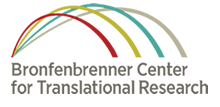 Even if you’ve never practiced t’ai chi before, you’ve probably seen other people making the graceful, flowing movements that define this martial art.
Even if you’ve never practiced t’ai chi before, you’ve probably seen other people making the graceful, flowing movements that define this martial art.
T’ai chi is a Chinese exercise system that uses slow, smooth body movements and deep breathing to achieve a state of relaxation of body and mind. The practice is based on the Confucian and Buddhist belief that health is controlled by two opposing life forces, yin and yang.
For at least 700 years, and likely much longer, people have been practicing t’ai chi as a way to improve health and achieve balance in their lives. While the practice has stood the test of time, is there any evidence that it really works?
The answer is yes.
A new paper published in the British Journal of Sports Medicine evaluates of 35 individual systematic reviews of t’ai chi to determine if the practice contributes to improvement of any disease or clinical symptoms. The paper looked at a wide range of medical conditions – cancer, Parkinson’s disease, osteoarthritis and cardiovascular disease, to name a few.
Several of the systematic reviews reviewed in the publication reached conflicting conclusions. But there are two areas where health benefits of t’ai chi are clearly present – preventing falls in older adults and improving psychological well-being and overall health in people of all ages.
If you’re looking for a gentle way to improve your health, why not give t’ai chi a try?




